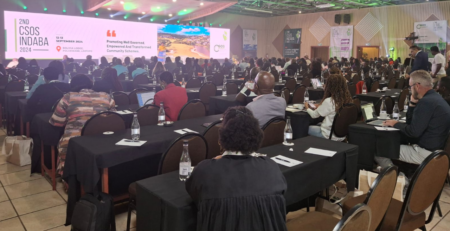From sink to sunk: how throwing the “kitchen sink” can fall flat in court
In legal disputes, there are moments when one party resorts to a “kitchen sink” approach, throwing a multitude of technical defences and procedural challenges at a case in hopes that something will stick and possibly delay the inevitable.
A striking historical example is the Watergate scandal (1972–1974) in the USA, where President Richard Nixon’s legal team employed numerous obstructionist tactics in an effort to deflect the mounting evidence against them. However, these frantic attempts ultimately backfired, weakening their position and exposing the lack of a coherent defence strategy. Watergate serves as a potent reminder: in the face of clear and straightforward evidence, a barrage of technical arguments can often do more harm than good, illuminating the futility of such tactics in court. This case analysis explores a similar legal strategy, examining how efforts to delay or sidetrack a matter with unfounded technicalities can unravel in court.
In a recent appeal in the Johannesburg High Court, concerning a Homeowners Association (HOA) levy dispute, in Bogatsu and Another v 108 on 8th Street Homeowners Association[1] (“108 on 8th Street”), we focus on jurisdictional arguments, the legal standing of the HOA, and the application of the Community Schemes Ombud Service Act[2] (“the CSOS Act”). The respondent HOA brought claims against the appellants in the Magistrate’s Court to recover unpaid contributions, levies, and additional charges spanning two distinct periods.[3] The matter went to trial, and the Magistrate ultimately ruled in favour of the HOA, ordering the appellants (the homeowners) to pay the claimed amounts with costs. The Magistrate’s judgment then went under appeal to the High Court.
The homeowners disputed both claims, contending that the HOA lacked the authority to impose the levies in question. In their defence for the second claim, they raised preliminary objections, arguing the court’s lack of jurisdiction and that the matter was pending (lis alibi pendens) in another forum.[4] However, the court consolidated the cases by agreement between the parties, dismissed these objections and ruled in favour of the HOA.[5] The Magistrate ordered the appellants to pay the outstanding amounts with interest and legal costs on an attorney-client scale.[6]
Grounds of Appeal
The homeowners challenged the Magistrate’s judgment on several bases:[7]
(a) Lack of Legal Standing (Locus Standi)
The homeowners asserted that the HOA was not a properly constituted entity, thereby lacking the authority to sue.
(b) Absence of a Valid Constitution
They argued that the HOA could not claim or impose levies without a valid constitution.
(c) Jurisdictional Argument
They contended that levy disputes fall exclusively within the jurisdiction of the CSOS.
(d) Special Pleas on Lis Alibi Pendens
Given a related CSOS application, they claimed that the Magistrate’s should not have entertained the case, as a similar matter was already pending.
Legal Standing of the HOA
The homeowners questioned the HOA’s locus standi, arguing that it was not registered and therefore legally non-existent. [8] The burden of proving locus standi lies with the party initiating the action, typically demonstrated through the founding papers. [9] Here, the HOA relied on clause 17.18 of its constitution, which allows the HOA to recover unpaid levies in any court with jurisdiction. [10]
In their plea for the first action, the homeowners acknowledged that the respondent is a common law HOA with the authority to initiate legal proceedings under clause 17.18 of its constitution. [11] However, in their plea for the second action, the homeowners reversed their position, denying this fact and challenging the respondent to prove its authority.[12]
During cross-examination at trial, the one homeowner was questioned about this contradiction concerning the HOA’s establishment and legal standing. [13] The homeowner ultimately conceded that the respondent is indeed a validly constituted HOA with the authority to initiate legal proceedings as outlined in clause 17.18 of its constitution. [14]
Absence of a Constitution and Authority by Resolution to Impose Levies
The homeowners also contended that the HOA lacked a valid constitution and requisite authority to impose levies. [15] However, the Magistrate noted that the HOA’s constitution was adopted in April 2015, prior to the appellants’ ownership, thus binding them as members under the terms of their title deed. [16] Clause 17.2 of the constitution explicitly authorises the HOA to levy charges to cover township expenses, affirming the Magistrate’s decision on the homeowners’ payment obligations. [17]
Jurisdictional Debate and the CSOS Act
The homeowners argued further that the CSOS is the designated forum for levy disputes, referencing the case of Body Corporate of Via Quinta v Van der Westhuizen NO and Another [18] (“Via Quinta”), which suggests that unresolved levy disputes should be directed to CSOS rather than the courts. [19] However, the HOA countered that s 38(1) of the CSOS Act offers an optional, rather than exclusive, forum. [20] Accepting this view, the Magistrate held that s 38(1) permits a party materially affected by a dispute to approach CSOS but does not prohibit recourse to the courts. [21]
The court found the homeowners’ reliance on Via Quinta misplaced, clarifying that Via Quinta pertained to improperly determined levies, while the current case dealt with the enforcement of established levies. [22] This distinction affirmed the concurrent jurisdiction of the courts to adjudicate levy recovery claims in the absence of contested levy amounts. [23]
Lis Alibi Pendens: Pending Dispute
The homeowners also raised the defence of lis alibi pendens (albeit only for the second claim and not the first claim), citing a pending CSOS application seeking billing and record-keeping details, which they argued overlapped with the court case. [24] However, the High Court dismissed this plea, noting that the CSOS application and the court case sought different forms of relief. [25] The CSOS matter requested documentation, while the court action aimed to recover unpaid levies, making the two cases substantively distinct. [26]
In conclusion, the court rejected all grounds of appeal, emphasising that none held merit sufficient to overturn the judgment of the Magistrate’s Court. [27] Accordingly, the appeal was dismissed with costs awarded to the HOA.[28]
While the Watergate scandal addressed matters of far greater significance, and this case involves a relatively modest levy dispute, a valuable lesson persists: meritless defences that merely drive up costs and waste court time do little to advance justice. Such tactics place an unnecessary strain on an already overburdened judicial system, where delays and a shortage of judicial officers challenge the efficient administration of justice. The simpler takeaway is this: as members of a community scheme, prioritise paying levy contributions or seek assistance from the scheme to arrange a manageable payment plan to avoid protracted and costly legal battles.
If you throw the kitchen sink, you risk throwing money down the drain.
Are you in need of expert legal advice? Our specialist legal team is standing by to support and guide you with all your “complex” issues. Reach out to us!
FOOTNOTES:
[1]. (A2022/037938) [2024] ZAGPJHC 611 (28 June 2024). Accessible at https://www.saflii.org/za/cases/ZAGPJHC/2024/611.html#_ftnref2.
[2]. Act 9 of 2011.
[3]. Para 2.
[4] Para 3.
[5] Para 4.
[6] Para 4.
[7] Para 5.
[8] Para 17.
[9] Para 18.
[10] Paras 19 and 20
[11] Para 21.
[12] Para 21.
[13] Para 22.
[14] Para 22 and 23
[15] Para 33.
[16] Para 35.
[17] Para 37.
[18] (A196/2017) [2017] ZAFSHC 215 (16 November 2017) at para 18. Accessible at https://www.saflii.org/za/cases/ZAFSHC/2017/215.html.
[19] Para 7 and 8.
[20] Para 9.
[21] Para 10.
[22] Para 12.
[23] Para 12.
[24] Para 30.
[25] Para 32.
[26] Para 32.
[27] Para 39.
[28] Para 40.1.






